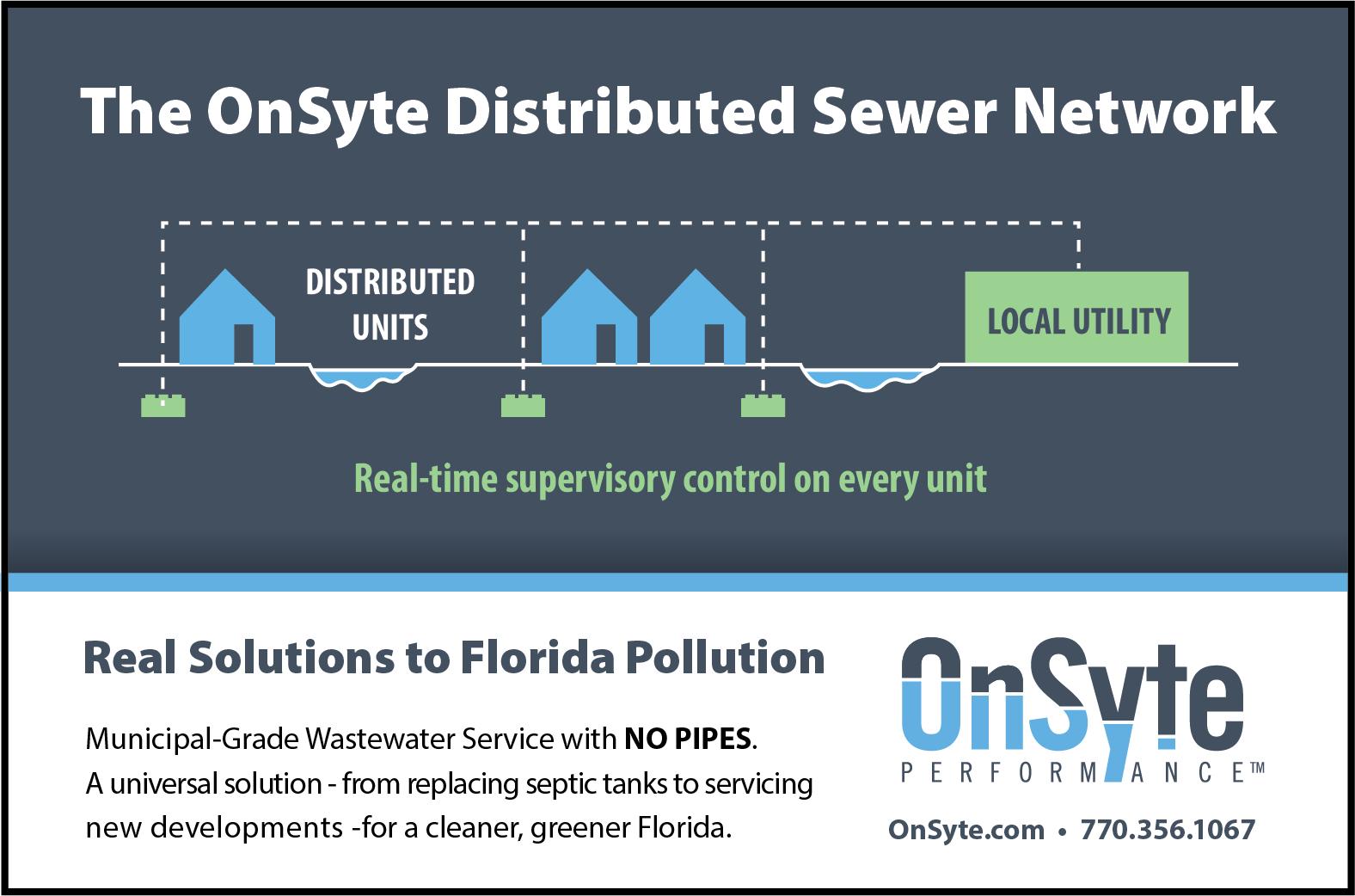
Florida's Environmental News Source of Record focused on news content of interest to the environmental community.


Florida's Environmental News Source of Record focused on news content of interest to the environmental community.
Rockville, MD - When it comes to American cuisine, there are few things more iconic than steakhouses. The slabs of marbled meat, the sizzling grills, the oozing butter, and the dripping bravado, maybe even a cowboy hat or two for ambiance—it's enough to make even fictional steakophile Ron Swanson misty-eyed.

Yet for all the traditional steak dinners ordered daily, there are restaurants nationwide pushing the concept of the all-American steakhouse to new culinary heights, according to market research firm Packaged Facts in the brand new report 2017 Forecast: Culinary Trend Tracking Series.
"The steakhouse is back and will capture our attention in 2017. Not that the classic restaurant style ever disappeared, but a renewal of the model is taking place in response to new sources of beef and new flavorful expressions of the concept that get chefs and diners excited," says David Sprinkle, research director, Packaged Facts.

Address label change? Connect
If your mailing label is inaccurate or incomplete, please contact us with the correct information at SPECIFIER PUBLISHING LLC, P.O. Box 1857 Tallahassee, FL 32302, or email us at admin@floridaspecifier.com. We appreciate your help with keeping our circulation database accurate.
Today's steakhouse menus increasingly feature grass-fed cattle, locally raised animals, heritage varieties, meat butchered and dry aged in-house, and dishes that stem from the whole animal, not just the premium cuts. And that's just the meat. Creative side dishes in lieu of old standards, global and seasonal flavors, and a wider menu selection also distinguish these new school operations.
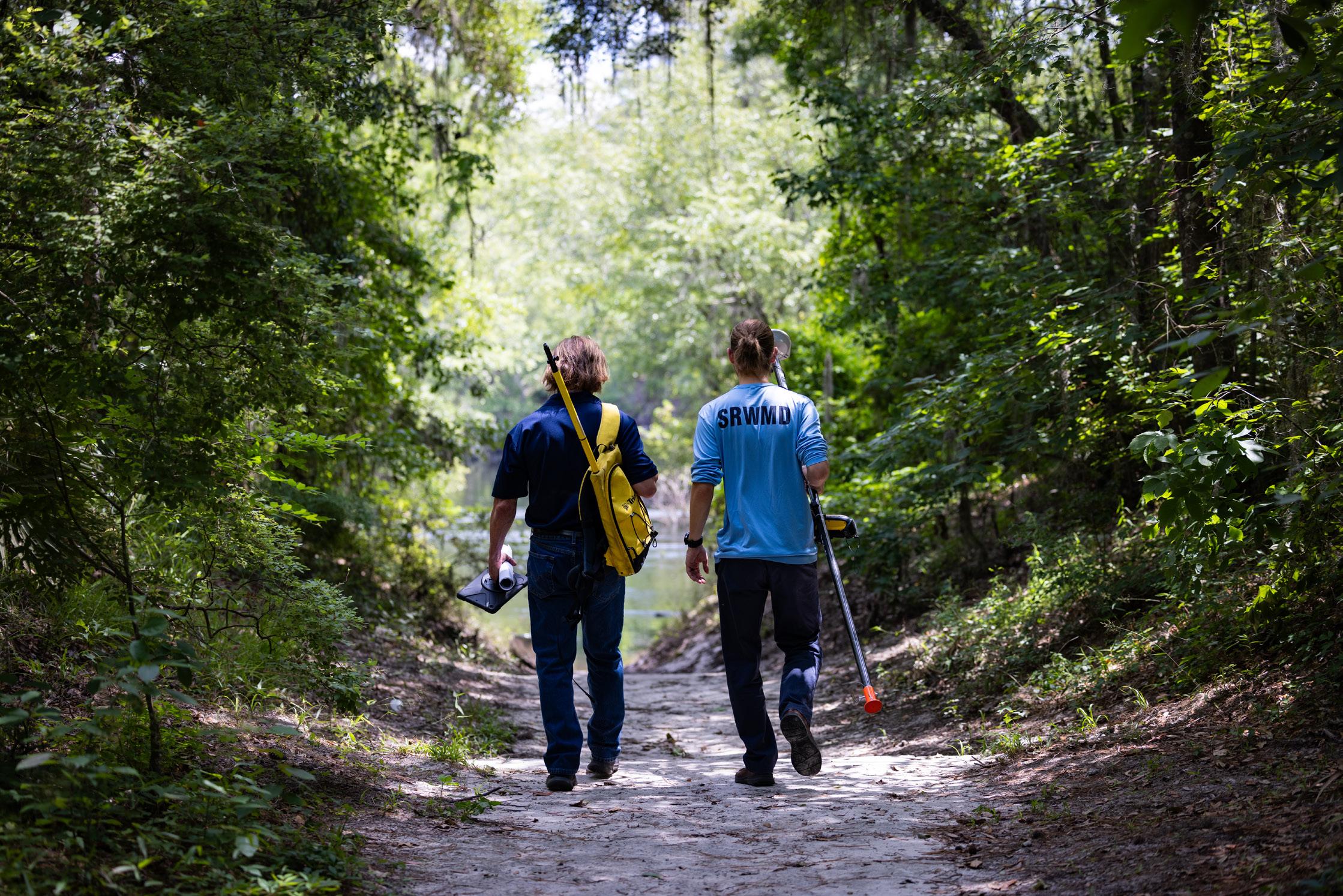
By STAFF REPORTS
The Suwannee River Water Management District (SRWMD) is tasked with a mission that is as complex as it is vital: managing the water resources across a 7,640-square-mile region.
quested doneness. These operations are also designed to be more inclusive, more of a great place for all kinds of people to dine well, not just traditionminded men on expense accounts. As a result, the modern steakhouse is increasingly similar to other modern restaurants with a focus on distinctive
This responsibility requires not just boots on the ground but also sophisticated technology.
At the forefront of SRWMD's operations is Geographic Information System (GIS) technology, a powerful tool that transforms vast amounts of data about our lands and water into actionable insights.
Jacksonville, FL - After much anticipation and excitement, Jollibee, the largest Asian restaurant company, is now open in Jacksonville. This is the 36th store in the US, as well as
Unlocking the Potential of GIS

About the Report
2017 Forecast: Culinary Trend Tracking Series offers an outlook on the culinary trends—the foods, dishes, ingredients and flavors—that Packaged Facts expects to grow in popularity in 2017.
A GIS application is simply a map with an overlay of data. Americans who have used Google Maps, they have used GIS to explore and make decisions.
At its core, GIS is a system designed to capture, store, analyze, manage, and present spatial or geographic data. For SRWMD, GIS is more than just a mapping tool; it's the backbone of their decision-making process.
spatial data
decisions to solve problems."
Floodplain Mapping: A Critical Application

By STAFF REPORTS
Editor’s Note: Please visit www.floridaspecifier.com for post-session updates when they are available
Florida legislators and Gov. Ron DeSantis volleyed insults back and forth for weeks; legislators lost a week to a rare Florida snowstorm, completed a special session, and will need extra time to complete this year’s legislative session, leaving many policy proposals and budget items on the cutting room floor as time was crunched. On the last day of the normally 60-day
been the talk of the town since 2016. With the opening, Floridians will get to try Jollibee's signature menu items such as the world famous Chickenjoy. This dish is delicately breaded to be crispylicious on the outside and juicylicious inside. The well-loved Jolly Spaghetti is a favorite of both kids and kids-at-heart because of its signature sweetstyle sauce, loaded with chunky slices of savory ham, ground meat, and hotdog. Other classic menufavorites include the juicy and cheesy Jolly Hotdog, and the Peach Mango Pie, which is made with real Philippine sweet mangoes and a flaky golden brown crust.
"Every department within the District relies on GIS in some capacity," said Paul Buchanan, the GIS Manager at SRWMD.
"From land management to water quality monitoring to flood hazard zone mapping, GIS helps us visualize complex geo-refer-
One of the most critical applications of GIS at SRWMD is in floodplain mapping. Florida's weather is notorious for its unpredictability and extreme rain events. Storms in just the last few years have produced heavy rainfall and flooding reshaped the landscape in subtle ways.
“Accurate floodplain maps are essential for agricultural, insurance, and recreational planning,” said Andrew Neel, a CONTINUED ON PAGE 7
2025 legislative session, lawmakers announced they had finally come to a top-line budget number agreement, but would require more time to finish the state’s budget. Budget negotiations by each budget area were to begin in mid-May with session extended to June 6. The next fiscal year begins July 1.
"As Jollibee debuts in Florida, we anticipate seeing not only a multitude of excited Jollibee patrons waiting to get their hands on their Jollibee favorites, but also first-timers waiting to have their own Jollibee experience," said Jose Miñana, Jollibee Foods Corporation's Group President for North America. "There's no greater joy for us than serving the needs and tastes of Jollibee fans in the community. At Jollibee, we aim to bring families together for happy moments over great tasting food with superior value, served with warm and friendly service – our own brand of joy."
The brand has become a symbol of nostalgia and warm childhood memories for many overseas Filipinos in the U.S. To many, Jollibee is the go-to restaurant of Filipinos for both special
President informed me of his decision to no longer bring the House’s historic tax proposal to the Senate floor,” he wrote in a memo. “As I’m sure you can appreciate, this blew up the framework for the budget deal we had negotiated.”
See JOLLIBEE page 15
But then on May 9, Speaker Daniel Perez said Senate President Ben Albritton broke his commitment to the budget talks they both announced on Day 60 of legislative session.
“I was disappointed when the Senate
Albritton responded shortly later with his own statement.
“As I am sure you are aware, earlier this week Governor DeSantis expressed concern regarding the tax relief framework announced last Friday. Specifically, that the proposal for an across-the-board
By STAFF REPORTS
As the Trump Administration establishes the team of leaders and staffers it intends to rely on for policy wins and operational moves, it continues to rely on people with ties to Florida.
Among the most high-profile names are Chief of Staff Susie Wiles, Secretary of State Marco Rubio, Attorney General Pam Bondi, United Nations Ambassador Mike Waltz, and Deputy Chief of Staff James Blair, among others.
But beyond those who may regularly appear on newscasts and in headlines, the Administration is pulling from Florida in other areas. This is especially true in the U.S. Environmental Protection Agency. EPA is led by Administrator Lee Zeldin, a former Congressman from New York, who ran for Governor in 2022.
Zeldin’s team has identified two Florida officials for key roles at the agency.
Teresa Booeshaghi, the Florida Department of Environmental Protection Deputy Director of the Division of Waste Management, announced in early April that she was moving to Washington D.C. to take a role with the EPA.
Booeshaghi, in an email to staff, said she will serve as Deputy Assistant Administrator of Policy for the Office of Land and Emergency Management, starting May 12.

“Looking back on the years I have spent here, I am filled with immense gratitude for the opportunities I’ve had to learn, grow, and collaborate with such an incredible group of colleagues,” she wrote. “I am proud of what we have accomplished as a team, and I am confident that the organization will continue to thrive in the years to come.”
Booeshaghi has been with the Department for 24 years. According to her LinkedIn profile, she started in 2001 as an Environmental Specialist I managing contracts and programs. She helped establish the Brownfield State Response Program.
She follows another former DEP official who moved to EPA under the Trump Administration. Jessica Kramer, former DEP Deputy Secretary of Regulatory Programs
left Florida earlier this year to become EPA Assistant Administrator for Water.
Prior to serving at DEP, Kramer worked in an environmental law practice in Washington, D.C., and on staff for Sen. Shelley Moore Capito (R-W.Va.), then-ranking member of the Senate Environment and Public Works Committee and now Chairman.
In a March letter, the Association of Metropolitan Water Agencies wrote to seek support for Kramer’s Senate confirmation. The Senate Environment and Public Works Committee supported Kramer's confirmation on April 10.
“Ms. Kramer has a clear track record of working collaboratively with stakeholders in the water community to achieve results that advance the Office of Water’s mission of ensuring safe and clean drinking water that protects public health and promotes economic activity,” the letter, signed by Association CEO Tom Dobbins, states. “Again, AMWA strongly supports the nomination of Jessica Kramer to serve as EPA’s Assistant Administrator of the Office of Water. Her experience, policy knowledge, and relationships in the water sector will be an asset to the entire agency. We urge the Committee to favorably report her nomination, and we support her confirmation by the full Senate.”
By STAFF REPORTS
In late March, the Environmental Protection Agency (EPA) and the U.S. Army Corps of Engineers published the official notice in the Federal Register (90 FR 13428) outlining significant updates to how “waters of the United States” (WOTUS) will be interpreted under the Clean Water Act. Prompted by the Supreme Court’s 2023 decision in Sackett v. EPA, the agencies announced plans to revise the way they determine whether certain wetlands and water bodies fall under federal jurisdiction.
A key highlight of the notice is the agencies’ move to eliminate “discrete features” — such as culverts, swales, or ditches — from automatically establishing a “continuous surface connection” to a jurisdictional water. Instead, wetlands and water bodies must physically abut or touch the main water body to be considered adjacent. This shift marks a departure from earlier 2023 guidance and is intended to provide a more straightforward approach in line with Sackett. This policy change was previously announced in a March 12 joint memorandum issued by the EPA and Corps titled, “WOTUS Notice: The Final Response to SCOTUS.”
To gather further perspectives before finalizing any additional clarifications or rulemaking, the agencies held listening sessions in late April and early May for states, tribes, local governments, agriculture, environment, and conservation
stakeholders. Public listening sessions haven’t been announced. The listening sessions focused on three key topics: defining “relatively permanent” waters, clarifying the scope of “continuous surface connection,” and determining how jurisdictional ditches should be evaluated.
EPA accepted written recommendations from the public until April 23. According to the Federal Register, 34,693 public comments were received.
These developments signal another chapter in the long-evolving story of WOTUS regulations, and practitioners are encouraged to participate in the listening sessions and public comment process as the EPA and Army Corps consider next steps for federal water oversight.
The Federal Register filing comes after officials from both agencies announced they would be redefining WOTUS after years of rulings, rules, and disparate policy decisions by states on how to define waters of the United States under the Clean Water Act in protection of wetlands.
“We want clean water for all Americans supported by clear and consistent rules for all states, farmers, and small businesses,” EPA Administrator Lee Zeldin said in a news release issued March 12. “The previous Administration’s definition of ‘waters of the United States’ placed unfair burdens on the American people and drove up the cost of doing business. Our goal is to protect America’s water resources consistent

with the law of the land while empowering American farmers, landowners, entrepreneurs, and families to help Power the Great American Comeback.”
In a memorandum issued March 12, the EPA, and U.S. Army Corps of Engineers noted that Sackett provided a two-part test for determining CWA jurisdiction over adjacent wetlands. One, an adjacent body of water must be a “water of the United States,” meaning permanent and connected to a traditional navigable water. Second, a wetland must have a continuous surface connection to a requisite covered water, making it difficult to determine where the water ends and the wetland begins. The memo gives a history on Sackett and a preceding case, Rapanos v. United States.
It also notes that the EPA guidance in recent years has not been helpful to landowners affected by the court ruling and subsequent federal rule filings. It describes two 2023 rule filings as not including, “adequate direction or guidance on the meaning of the “continuous surface connection” requirement, and the agencies’ case-specific policy memoranda issued post-Sackett neither provided national guidance on the topic nor clear and transparent direction for the public or the agencies.”
“This guidance represents the agencies’ views on the proper implementation “waters of the United States” and is effective immediately,” the memo states.
CONTINUED ON PAGE 3
SAMANTHA EPSTEIN
St. Johns River Water Management District
KATHERINE SQUITIERI
Southwest Florida Water Management District
KEYNA CORY
Florida Recycling Partnership Foundation
ERIC BEIGHTEL Environmental Science Associates
From the Florida Specifier board:
“Anne Longman was more than a pioneering lawyer; she was a visionary leader who shaped Florida's environmental legal landscape through wisdom and integrity. As a founding partner of Lewis, Longman & Walker, Anne set a powerful example, leading with grace and strength. Her work in environmental, administrative, and appellate law set new standards for excellence and compassion. Anne's legacy lives on not just in the respected firm she helped build, but in the countless lives she touched as a mentor, advocate, and friend. Her intellect, kindness, and steady spirit will be profoundly missed but always remembered.”
The Florida Specifier (ISSN 07401973), founded in 1979, is published every other month for $60 per year in-state; $80 out-of-state, by SPECIFIER PUBLISHING LLC, P.O. Box 1857, Tallahassee, FL 32302. Subscription refunds are not provided. Local tax applies.
POSTMASTER: Send address changes to the FLORIDA SPECIFIER, P.O. Box 1857, Tallahassee, FL 32302.
© Copyright 2024 by SPECIFIER PUBLISHING LLC. All rights reserved. No part of this publication may be reproduced or transmitted in any form without the publisher’s prior written permission.
Florida Specifier P.O. Box 1857
Tallahassee, FL 32302 Admin@FloridaSpecifier.com
By SAMANTHA EPSTEIN
Beneath Florida’s sandy ridges and sprawling wetlands, water slowly filters through porous limestone, collecting in the vast underground reservoir known as the Floridan Aquifer. For centuries, this underground lifeline has sustained Florida’s people, wildlife, and landscapes. From the indigenous Timucua to today’s growing communities, the aquifer has remained a steady provider of water, nourishing the land and supporting the way of life that makes Florida unique.
But just as the state’s history is intertwined with its waters, so is its future. With a rising population and evolving water needs, careful stewardship is essential to maintaining balance between use and replenishment. The St. Johns River Water Management District (District) is committed to ensuring a sustainable water supply through innovative projects and conservation efforts — securing the resource for generations to come.
Florida receives an average of 54 inches of rainfall a year, yet much of it is lost through runoff and evapotranspiration before it can help replenish the aquifer. Past urban development has increased runoff and reduced natural infiltration. Meanwhile, some water bodies experience seasonal overflows, sending excess rainwater into the St. Johns River or Atlantic Ocean instead of recharging underground reserves. This delicate hydrologic puzzle requires forward-thinking solutions to restore balance.
In Northeast Florida, Keystone Heights knows firsthand the importance of water sustainability. The area’s cherished lakes —Brooklyn and Geneva— have long been gathering spots, central to many outdoor traditions. From fishing trips to paddling adventures, the lakes have been a backdrop for stories, celebrations and quiet moments alike. But these treasured experiences, and the way of life they support, are increasingly at risk, as lake water levels have declined.
"I grew up here and remember when our lakes were full," said former Keystone Heights Mayor Tony Brown. "When the water was high, there was fishing, water sports and family time — not just on the weekends, but every day. In more recent years, I’ve seen our lakes dry up like deserts, killing the fish and other wildlife that depend on them. This hasn’t just impacted our environment — it has hurt our local economy, too."
Recognizing the need to support both the aquifer and these lakes — the District, along with their partners — launched the Black Creek Water Resource Development
FROM WOTUS ON PAGE 2
“The EPA will apply this guidance when determining if a wetland has a “continuous requisite jurisdictional water under the Clean Water Act.”
For decades, officials in Washington D.C. have attempted to create definitions of WOTUS, which are continuously challenged in court. The country now has a patchwork of regulations, with 23 states operating under the “2023 Rule,” which took effect in March 2023, and 27 states
Project. Once fully operational, the project will capture up to 10 million gallons of excess water per day from Middleburg’s Black Creek. This water will be treated and redirected into Alligator Creek, a small, natural waterway leading to Lake Brooklyn. As this flow enters into Lake Brooklyn, water will gradually seep to the lakebed, replenishing the aquifer and benefiting area lakes.
"Lakes Brooklyn and Geneva are more than just local landmarks — they’re part of one of two major recharge areas for the Floridan Aquifer, which supplies drinking water to millions of Floridians," said Vivian Katz, president of the Save Our Lakes Organization. "While our community has borne the burden of declining lake levels, the greater cost will come if the aquifer gets too low. The Black Creek project is a vital first step toward protecting Florida’s water future."
As the remaining cement is poured and the last pipe laid, construction on the Black Creek project is expected to finish by summer. With the support of the legislature and Florida Department of Environmental Protection, the District, Clay County Utility Authority, Gainesville Regional Utilities, St. Johns County Utilities, and JEA joined forces — not just as agencies, but as stewards of Florida’s future — to put this plan into action. Their collaboration is a testament to the sustainability of this project.
"The Black Creek project is the product of more than a decade of public dialogue, planning and partnership," said Bob Naleway, chief of the District’s Bureau of Projects and Construction. "Since 2013, stakeholders, including utilities, agencies, environmental advocates and local communities, have come together with a shared vision for protecting water resources in Keystone Heights and beyond. This kind of collaboration isn’t just valuable, it’s essential for solving complex environmental challenges and creating long-term benefits for the region."
For residents, the Black Creek project represents a commitment to Florida’s future. As lake and aquifer levels rise, so too will the pastimes that define life in Keystone Heights. Beyond recreation, the project will provide economic benefits — supporting agriculture, strengthening businesses, and enhancing property values. The Black Creek Water Resource Development Project is more than infrastructure; it’s an investment in Florida’s natural legacy and a promise to protect its waters.
Samantha Epstein is Regional Media and Communications Coordinator for the St. Johns River Water Management District
– including Florida – operating under a pre-2015 regulatory framework.
That’s partly because in May 2023, the U.S. Supreme Court ruled in Sackett v. EPA that federal agency jurisdiction “extends only to the limits of Congress’ traditional jurisdiction over navigable waters.” The simplified WOTUS definition in Sackett includes only: traditional, navigable waters such as “streams, oceans, rivers, and lakes” and wetlands when they are continuously connected to, and indistinguishable from, navigable waters.
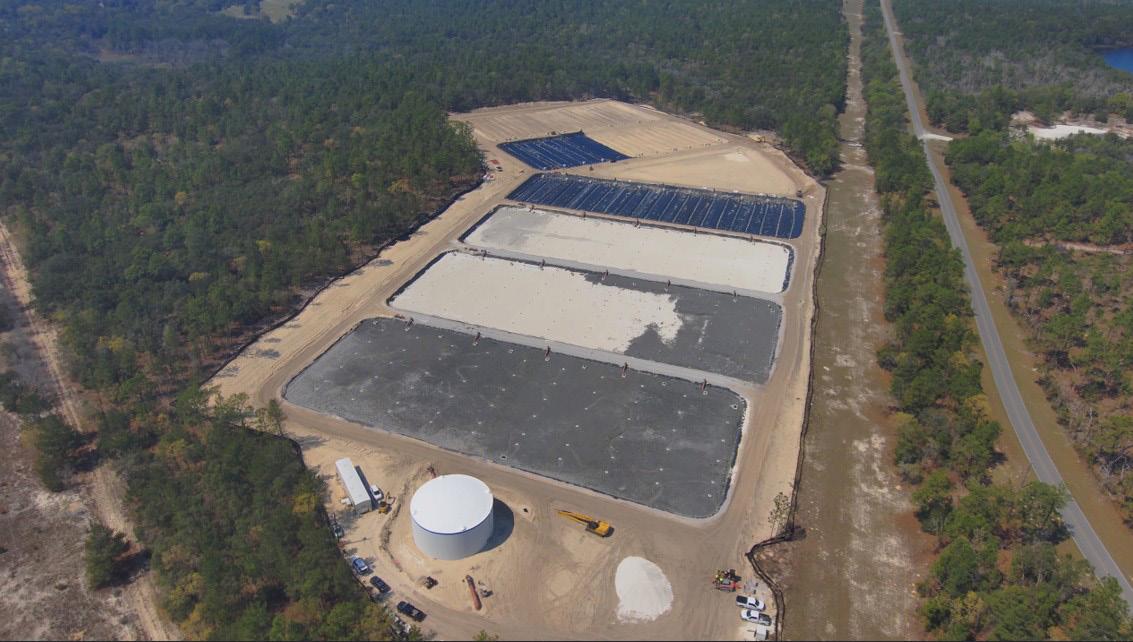






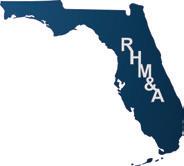
By BLANCHE HARDY
Earthjustice is representing American Bird Conservancy (ABC), the Center for Biological Diversity, and the Environmental Confederation of Southwest Florida in the filing of a lawsuit in federal court to defend critical protection for the Florida Scrub-Jay.
The suit requests the court’s intervention in a 2024 lawsuit filed in Florida by the Pacific Legal Foundation, which is seeking the removal of Endangered Species Act protections from the Florida Scrub-Jay. According to ABC, Pacific Legal wants to remove Charlotte County's decade-old Florida Scrub-Jay Habitat Conservation Plan.
The Florida Scrub-Jay is found exclusively in Florida. The species was listed as a threatened species by the federal government in 1987 due to population decline resulting from habitat loss. ABC notes continuing decline in the current population results in an estimated less than 10,000 remaining birds — 90 percent fewer than before European settlement.
Scrub-Jays are a persistent symbol of the state. The birds garner local affection due to their distinct blue plumage, inquisitive nature, and tendency to appear near humans. ABC describes the species as cooperative breeders, forming family groups that defend territories and raise new chicks together. As extended families, they are not easily relocated. They occupy the Florida scrubland habitat favored by agricultural operations and developers and
face ever-increasing pressures as Florida continues to develop.
“People visit Florida from all over just to catch a glimpse of our gregarious, brilliant blue Scrub-Jays,” said Elise Bennett, Florida Director at the Center for Biological Diversity. “The Endangered Species Act saved these vibrant birds from extinction. Undermining those protections now would have devastating consequences for our few remaining Florida Scrub-Jay families and all the people who love them.”
Charlotte County enacted a Scrub-Jay Habitat Conservation Plan in 2014 to comply with species protection regulations under the Endangered Species Act. The plan does not prevent development in Scrub-Jay habitat, but does require a fee for building in the plan's designated area. The fee funds Scrub-Jay habitat enhancements, conservation research, and the purchase of additional habitat suitable protected lands.
ABC notes the Earthjustice suit counters a lawsuit filed against Charlotte County and the U.S. Fish and Wildlife Service by a Charlotte County landowner, Michael Colosi. Colosi refuses to pay the fee on five acres he purchased in designated ScrubJay habitat. Pacific Legal Foundation represents him.
The Colosi - Pacific Legal Foundation suit seeks a determination that the Endangered Species Act cannot protect any species found only in one state because Congress' authority to enact laws only applies to issues that cross state borders. The lawsuit
contends that because the Scrub-Jay is found only in Florida, federal protection should not apply.
ABC contends that the more far-reaching consequence of any success of the Colosi - Pacific Legal Foundation lawsuit is its potential to impact hundreds of other imperiled species found in a single state. ABC lists the Florida Panther, Florida Grasshopper Sparrow, Least Bell's Vireo, and many of Hawaii's declining endemic species as equally imperiled by this action.

“Florida's diverse ecosystem is home to many plants and animals found nowhere else in the world,” said Sarah Gledhill, CEO and President of the Florida Wildlife Federation. “Targeting Charlotte County's proactive effort to protect the Florida Scrub-Jay's habitat from uncontrolled growth is a threat to all of Florida's unique species from the Key Deer, only found in the Florida Keys, to the Florida torreya, a Critically Endangered tree found in the Apalachicola region. We stand with Charlotte County and the U.S. Fish and Wildlife Service for their long-term commitment to protect this cherished species.”
“This species, found nowhere else on
Earth, is in real trouble but it isn't too late to save it,” said Michael J. Parr, ABC's President. “Florida was the state where the most recent mainland bird extinction in the United States happened back in 1987 when we lost the Dusky Seaside Sparrow. Let's not allow another iconic Florida species to go the same way.”
Similar bills were filed during the 2025 Florida legislative session that would designate the Scrub-Jay the official Florida state songbird. The bills would also name the American flamingo as Florida’s official state bird. The state’s current official state bird is the mockingbird. Neither bill passed during the 2025 legislative session.
By KATHERINE SQUITIERI
Fertilizing your lawn the right way can make a big difference for Florida’s water quality. And it’s important to understand the best practices for fertilizing responsibly, especially with more than 1,000 new residents moving to Florida daily.
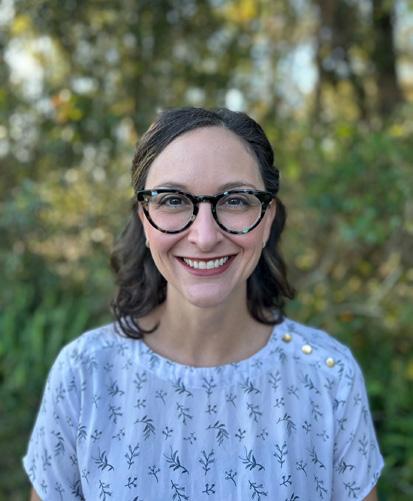
The Southwest Florida Water Management District (District) recently conducted a survey to test residents’ knowledge about best practices for fertilizing and found that only 52 percent agreed that the way they fertilize affects the health of local water bodies.
Additionally, only 20 percent were aware of local fertilizer restrictions and 40% thought the best time to fertilize was before heavy rain, which can result in fertilizer washing away and polluting local waterbodies through runoff.
To help raise awareness of fertilizer best practices for homeowners, the District created the Fertilizing 101 campaign, which provides useful information based on University of Florida Institute of Food and Agricultural Sciences recommendations and links to helpful resources. The
goal is to educate residents and change fertilizing habits to help protect our local waterbodies, including Florida’s worldclass springs, rivers, and lakes.
When too many nutrients — such as nitrogen and phosphorus — are in our waterbodies they can cause excess algae growth. This reduces water clarity and causes extreme fluctuations in dissolved oxygen.This can be very stressful for aquatic wildlife, such as native fish and plants. This is why it’s so important to make sure we are all following recommended fertilizing practices. More is not always better.
April and May are generally the ideal time to fertilize your lawn in Florida. Grass is actively growing and it’s before the rainy season.
We encourage homeowners to test their soil before purchasing fertilizer, use slow- or controlled-release fertilizer, avoid fertilizing before heavy rain and to always check with local governments for fertilizing restrictions.
If we are smart about the way we fertilize, we can help protect our waterbodies for generations to come. Homeowners can visit WaterMatters.org/Fertilizing101 for fertilizing tips to create a healthy lawn or landscape.
As lead conservation education coordinator for the Southwest Florida Water Management District, Katherine Squitieri manages the District's youth education program and assists in water conservation outreach efforts. Katherine holds a bachelor’s degree
in environmental studies concentrating in Environmental Education and Communication from Green Mountain College. She also holds a master's degree in Global Sustainability concentrating on water sustainability from the University of South Florida.



Indian Manufacturer Expands Photovoltaic Modules Production
Waaree Energies Ltd, an Indian photovoltaics manufacturer, announced plans to double its production capacity at its Brookshire factory by adding a new 1.6GW unit, aiming for a total annual output of 3.2 GW of photovoltaic modules. The expansion will enhance the company’s existing US operations as part of a strategy to de-risk its global presence and localize production. Currently, Waaree operates global manufacturing facilities with a total capacity of about 15 GW, with a goal to scale the Brookshire site’s capacity to 5 GW by 2027.
Secures $200 Million in New Funding
Base Power, a Texas startup aiming to become the fastest battery installer in the Electric Reliability Council of Texas, has secured $200 million in funding to expand its operations and build a manufacturing facility. The company offers home battery systems to residential customers with minimal upfront costs and a three-year commitment to purchase power from Base, allowing for backup during outages and participation in energy markets. With this new funding, Base Power plans to grow its installation efforts, establish a factory in Texas, and adapt its model to work with utilities in other states, as well as enhance customer adoption of its large-scale battery systems. The startup is currently installing approximately 20 home battery systems per day and expects to significantly increase its installed capacity, aiming to reach 100 megawatt-hours by mid-summer.
Stake in Chevron East Texas Gas
Tokyo Gas is acquiring a 70 percent stake in Chevron’s East Texas gas assets for $525 million. The investment, expected to be seen favorably by the Trump administration, will be used to fund the Haynesville development and could potentially lead to LNG exports to Japan. Of the total purchase amount, $75 million will be paid in cash, and $450 million will be allocated as capital for developing Haynesville in Texas. As Japan's largest urban gas provider, Tokyo Gas primarily serves the Tokyo region. In addition to their operations in Texas, they also have operations in the Louisiana area within the U.S.
The Environmental Protection Agency (EPA) has granted Occidental Petroleum Corporation a permit to capture and inject carbon dioxide underground in Texas, marking it as the first project in the state
to receive such approval. The Houston-based company plans to store 500,000 metric tons of carbon dioxide in deep rock formations located 20 miles southwest of Odessa, with operations expected to begin this year. While the company aims to utilize direct air capture technology to reduce carbon emissions, there is ongoing debate among environmentalists and policy experts about the effectiveness of carbon capture in addressing climate change and whether the focus should shift to alternative fuel sources. The Texas Railroad Commission has also sought authority from the EPA to issue similar permits, potentially paving the way for further carbon capture projects in the state.
A jury in Plaquemines Parish found Chevron liable for $745 million in damages to restore coastal wetlands after a monthlong trial. Chevron has signaled its intent to appeal the verdict, which is significant as it sets a precedent for 40 other pending lawsuits against oil and gas companies alleging pollution and failure to comply with a 1980 state law requiring permits for coastal operations. The verdict is one of the largest ever awarded to a local government for environmental damage, potentially influencing similar lawsuits both in the U.S. and internationally.
Solar Farm to Power 20,000 in Northwest Louisiana
The first solar farm in northwest Louisiana, the 1,000-acre Rocking R Solar project in Caddo Parish, is nearing completion and is expected to power around 20,000 homes. Led by DESRI with SWEPCO purchasing the energy, the $82 million project represents the parish's first utility-scale solar farm, anticipated to generate 184,000 MWh of clean energy annually.
Louisiana Public Service Commissioner Foster Campbell believes this project will attract businesses seeking renewable energy, highlighting the state's commitment to progress. The Rocking R Solar project is expected to be operational in late spring or summer.
Mid South Extrusion, a Monroe company that manufactures plastic sheeting, will invest $12.5 million to add new production lines at its plant, creating 12 direct jobs and 26 indirect jobs in Ouachita Parish. This marks the company’s second expansion in recent months; in September, it announced a $17 million investment to enhance production, expected to add 21 jobs by August. The upcoming expansion, set to begin in November and operational by early 2026, will involve installing new manufacturing equipment and modifying the plant to accommodate the changes. Once complete, Mid South Extrusion will have 16 production lines and more than240 employees in a 350,000-square-foot facility.
Louisiana lawmakers are considering several bills aimed at incentivizing or requiring the construction of fortified roofs to combat soaring homeowners' insurance premiums. These measures include grant programs, tax breaks for homeowners
who install stronger roofs, and a potential mandate for new roofs in coastal parishes to meet fortified standards. Proponents hope that increasing the number of fortified roofs will lead to insurance premium discounts and attract more insurers to the storm-prone region. While a state grant program for fortified roofs exists, lawmakers are exploring dedicated funding streams and mandatory discounts to accelerate adoption and provide more substantial relief to homeowners.
A Baton Rouge jury awarded $411 million to Jose Valdivia, a Texas contractor severely injured in 2022 by a falling pipe at a Lake Charles refinery, likely the largest such verdict in Louisiana. His employer, Brock Services, failed to report the incident to OSHA, leading to cover-up allegations, and attributed Valdivia’s injuries to a preexisting condition. Brock disputed the verdict, claiming the accident was human error and plans to appeal. Valdivia’s lawyers cited safety violations, including poor training and unsecured work areas. OSHA could not investigate due to the expired statute of limitations.
CF Industries is expanding its Louisiana operations with a new $4 billion low-carbon ammonia plant, named the Blue Point Complex, to be built near Modeste at the RiverPlex MegaPark, creating 103 jobs. The plant will produce "blue" ammonia using carbon capture and sequestration, supported by federal tax credits and a 25-year CO2 sequestration agreement with 1PointFive, aiming to meet global demand for sustainable ammonia. Louisiana Economic Development provided $6 million in grants and $250 million in tax exemptions to secure the project, though it faces opposition from local environmental groups like Rise St. James, concerned about its impact. The project, which still requires parish and state permits, follows CF Industries’ long-standing presence in Louisiana and aligns with recent industrial investments in the region, despite potential challenges from new import tariffs.
Land Based Wind Farms Advance to Development
Private wind developers are signing lease agreements with landowners in rural Louisiana for potential land-based wind farms, marking a new interest in wind energy within the state. At least five utility-scale wind projects are under development, with locations in St. Landry, Madison, Tensas, and West Carroll parishes. Technological advancements allow access to faster winds, spurring this interest. St. Landry Parish officials have forged agreements with AES Corporation and Cordelio Power. A proposed bill requires permits for wind farm constructions by the DOE. The AES project in Acadiana is expected to generate 156 MW of power.
Biomass Manufacturing Company Denied Expansion Permit
A Mississippi permit board denied biomass manufacturing company Drax's request to scale up production and reclassify its Gloster plant as a major source of hazardous air pollutants. Reclassifying the
plant would have increased the allowable limits for emissions at the facility, which already has a history of multiple air pollution violations. Nearby residents to the facility claim the biomass company has worsened local air quality and have reported respiratory issues since the plant opened in 2016, attributing their health problems to dust and hazardous substances like acrolein and methanol released during wood pellet production. Despite Drax's claim of producing cleaner energy, the company has faced multiple air pollution violations and fines in Mississippi.
GE Aerospace plans to expand its manufacturing operations in Batesville, investing $11 million to create 100 jobs over three years. The project will include new equipment and machinery for producing advanced materials for aircraft engines. The Mississippi Development Authority (MDA) is backing the project through the Mississippi Flexible Tax Incentive program. MDA is also aiding in building enhancements and relocating equipment. Furthermore, support is provided by AccelerateMS, Panola Partnership, TVA, and Northwest Mississippi Community College.
Clear loop, a company dedicated to advancing climate solutions, has developed the latest of 3 solar farms in traditionally blue-collar Panola County, along I-55. Created in collaboration with local utility Tallahatchie Valley Electric Power Association and the county’s economic development agency, the solar installations total 18 megawatts and generate enough clean energy to power approximately 3,000 homes.
Consent Decree Orders Site Clean Up
After a five-year legal battle, a consent decree was approved requiring Drummond Company to clean up the Maxine Mine site, a major source of pollution in Alabama’s Black Warrior River. As part of the settlement, Drummond donated 366 acres of land to the Freshwater Land Trust for conservation. The land, located at the confluence of the Mulberry and Locust forks, will be managed to encourage wildlife diversity and restore the river’s health.
Rivercane Restoration Project
CONSERVE, a research group at the University of Alabama, recently completed the largest native rivercane restoration in the nation. Rivercane's effectiveness in capturing pollutants and sediment positions it as a vital tool for sustainable forestry. The project, implemented in partnership with local timber company Westervelt, has attracted the interest from Fish and Wildlife Service officials seeking to adopt its methods.
By KEYNA CORY

Improper disposal of batteries is a growing environmental and safety concern. Many people are unaware that tossing rechargeable batteries into curbside trash and recycling containers can have dangerous and costly consequences. The root of the problem lies in the way batteries, especially rechargeable lithium-ion batteries, respond when compacted and then interact with other materials when disposed of incorrectly.
Batteries, particularly rechargeable ones like lithium-ion and nickel-cadmium batteries, contain hazardous chemicals and are prone to overheating. When damaged, punctured, or compacted in a garbage truck, these batteries can spark, cause

HILLSBOROUGH COUNTY NAMES APPLIED SCIENCES BUSINESS OF THE YEAR
TAMPA, FL -- Applied Sciences Consulting, a Florida-based firm specializing in resilient engineering solutions, has been named Small Business of the Year by Hillsborough County. The award, in the 50 employees or less category, recognizes the firm’s contributions to sustainable design in stormwater management, watershed planning, vulnerability assessments, climate adaptation plans, and sanitary sewer design and reclamation.
“This award, which coincides with our 20th anniversary, gives us more reason to celebrate,” said Elie Araj, President of Applied Sciences. “Since founding the company in 2005, our professionals have helped communities across the state deal with flood control challenges, be more resilient to sea level rise, and improve their quality of life.
In Hillsborough County, for example, Applied Sciences is providing professional engineering services for the potable water and sanitary sewer conversion program in neighborhoods near the University of South Florida. Using federal grants, the project will assist up to 1,300 homes and involves extensive coordination between the County, City of Tampa, private contractors, and the residents and/or landlords.
“Getting homes off septic tanks and unreliable wells, then connecting them to potable water and sanitary sewer services
fires, release toxic fumes, or even explode. As these batteries become increasingly common in household electronics, toys, and tools, the risk of improper disposal continues to rise.
When batteries are disposed of in regular trash or recycling bins, they often end up crushed or damaged during the collection and sorting processes. This damage can cause the batteries to spark or overheat, leading to fires. Garbage trucks, which compact waste, are particularly susceptible to fires when batteries are accidentally crushed. Once a fire starts in a moving truck, it can be difficult to control, and drivers are trained to pull over quickly and empty the load in as safe a location as possible. This is often a parking lot, residential street or on the side of a roadway which can result in property damage or even injury to workers.
Landfills and recycling facilities are also at risk. When batteries are compacted or damaged during the processing of waste,
– at no cost to the residents - is a win-winwin. Such infrastructure improvements upgrade the neighborhood, provide needed reliable services to the residents, and improve groundwater quality by disconnecting the septic tanks,” Araj said.
Other projects currently underway across Florida include:
Applied Sciences is the program manager for the City of Tampa, overseeing the engineering work by a group of consultants updating watershed management plans citywide to mitigate flooding.
In Brooksville, Applied Sciences is developing the first city-wide stormwater master plan that identifies current infrastructure, estimates existing flooding, then identifies projects to deal with flooding and any water quality problems.
In Manatee County, Applied Sciences is assisting the County with the permitting of Automated Outfall Structures for technology-based active flood control decision-making ahead of storms.
In Martin County, Applied Sciences is helping the coastal low-lying county update their resiliency plans using data-based modeling to plan and prioritize infrastructure projects as sea levels rise threatens the coast.
“As local governments continue to face the dual challenges of more frequent storms and sea level rise, smart engineering is going to be critical,” Araj said. “Applied Sciences is committed to helping communities develop the infrastructure they need to be resilient in the face of those challenges.”
To celebrate Earth Day 2025, the Florida Department of Environmental Protection (DEP) hosted a statewide poster contest for students in grades 4-12. Students were invited to create artwork reflecting DEP’s
they can ignite flammable materials nearby. Recycling facilities, which often sort materials mechanically, are especially vulnerable to fires sparked by improperly discarded batteries. Such incidents can result in costly damage to equipment, prolonged facility shutdowns, and exposure of workers to harmful fumes and other injuries.
Beyond the immediate danger of fires, improperly disposed batteries can release harmful chemicals into the environment. When batteries break down, they can leach heavy metals and corrosive chemicals into the soil and water, posing longterm ecological risks.
To prevent fires, safety issues and environmental harm, consumers must be aware of proper battery disposal methods. Many communities offer designated drop-off locations for used batteries, including electronic retailers, household hazardous waste collection sites, and specialty recycling programs. Additionally, some munic-
Earth Day theme, "Protect & Preserve Florida’s Living Waters," and encouraging environmental awareness.
This year's theme also commemorates the 50th anniversary of the Florida Aquatic Preserve Act, which has safeguarded Florida's most treasured aquatic ecosystems for five decades. Today, 43 aquatic preserves span the state.
A finalist from each of the three grade-level categories (grades 4-5, 6-8 and 9-12) was selected from each of DEP’s six district offices. These finalists' posters were then reviewed by DEP staff in Tallahassee, who selected a state winner for each category.
"Congratulations to the winners of this year's Earth Day Poster Contest, and thank you to all who participated," said DEP Secretary Alexis A. Lambert. "I’m inspired by these students' creativity and their awareness of Florida’s environment. They understand that protecting our natural resources is a shared responsibility that we can fulfill through education, passion and action."
FCC ENVIRONMENTAL SERVICES TO ACQUIRE SOUTH BROWARD WASTE-TO-ENERGY FACILITY IN FLORIDA
FCC Environmental Services (FCC) has agreed to purchase Wheelabrator South Broward Inc., which owns the South Broward Waste-to-Energy (WtE) Facility in Fort Lauderdale, Florida, from WIN Waste Innovations. The transaction is anticipated to close in the second quarter of this year, marking FCC’s strategic expansion into the U.S. waste-to-energy sector.
The South Broward facility, operational since 1991, processes approximately 824,000 tons of residential and commercial post-recycled waste annually. Through its efficient combustion process, it generates enough renewable energy to power over 41,000 local homes and businesses.
FCC Environmental Services draws on the extensive experience of its parent com-
ipalities provide drop-off battery recycling bins or collection events to encourage safe disposal.
The Florida Department of Environmental Protection has a program, “Take Charge Florida” to educate residents about the importance of proper battery disposal at https://floridadep.gov/TakeChargeFlorida
Call2Recycle has a website showing battery drop off locations throughout the state at www.call2recycle.org
Ensuring batteries are disposed of properly and not in curbside trash or recycling containers is essential for protecting the environment, public health, and worker safety. Raising awareness about the dangers of improper battery disposal can help reduce the number of fires caused by batteries and promote safer, more sustainable waste management practices.
Keyna Cory is the Executive Director of the Florida Recycling Partnership Foundation.
pany, FCC Servicios Medio Ambiente, in recovering energy from non-recyclable waste. With over 50 years of expertise in this field, FCC Servicios Medio Ambiente currently operates 12 Waste-to-Energy facilities worldwide, with a 13th set to begin operations soon. Together, these facilities process 4.2 million short tons of waste annually, generating a total power output of 410 MWe.
ICYMI: GOVERNOR RON DESANTIS ANNOUNCES RECORD 126-DAY GULF RED SNAPPER RECREATIONAL SEASON FOR 2025
On April 28, Governor Ron DeSantis announced a record-breaking 126-day Gulf Red Snapper recreational season for 2025, the longest season since Florida assumed management of Gulf red snapper. The expanded season includes additional summer and fall fishing days from 2024, offering anglers more opportunities to fish over major holidays such as Memorial Day, Independence Day, Veterans Day, and Thanksgiving.
“Florida is the fishing capital of the world—with 4 million licensed anglers and generations of families who enjoy our waters. After setting a record last year, we’re doing it again with the longest Gulf Red Snapper season in state history, giving Floridians and visitors even more time to fish on Florida’s waterways, said Governor Ron DeSantis. “Smart state management of Gulf waters has allowed us to offer these record-breaking opportunities to Floridians year after year.”
“We want to thank Governor DeSantis for once again demonstrating Florida's commitment to being the Fishing and Boating Capital of the world," said Florida Fish and Wildlife Conservation Commission Chairman Rodney Barreto. "With more weekend and holiday opportunities, families will have more chances than ever to enjoy Florida’s unparalleled fishing opportunities and create long-lasting memories."
SRWMD Senior GIS Analyst. "LIDAR isn’t just about drawing new lines on a map. We used GIS to reanalyze the data and double-check the quality, ensuring that our maps reflected the most current and accurate information available. This data is used widely from local engineers all the way up to FEMA themselves, so we want to make sure we have the best possible dataset.”
For property owners, being moved into or out of a designated flood area can mean thousands of extra dollars for insurance. The updated floodplain maps have significant implications for property owners, developers, and insurers. By providing more accurate information, SRWMD is helping promote more informed decision-making.
Bridging the Gap: GIS as a Public Service
One of the most significant advantages of GIS technology is its ability to bridge the gap between technical data and public understanding.
Flood zones, elevation data, and land management plans can be incredibly complex, but GIS allows SRWMD to present this information in a way that is accessible to the public.
"We often get questions like, 'Is my property in a flood zone?' or 'What's my elevation?' These are exactly the kinds of questions GIS can help answer," said Buchanan.
Transparency and Accessibility
SRWMD doesn't just stop at providing answers; they go a step further by actively engaging with their stakeholders. The District uses GIS to create interactive maps that residents can use to explore their own properties.
FROM SESSION ON PAGE 1
sales tax cut would unduly benefit tourists and foreigners and is, ‘dead on arrival,’" he wrote. “From speaking with Senators, I know many of you share concerns with both the number and the policy of that framework and instead favor targeted tax relief that benefits growing families and seniors aging with dignity, including options the Senate proposed in SB 7034.”
Albritton stated the Senate “has been and remains committed to tax cuts that offer
This transparency is crucial, especially when it comes to issues like flood insurance and property development.
"We want the public to know that GIS data is being used all around them every day for many applications and purposes,” Buchanan said. “A lot of GIS data is available to them as well in many forms that they are familiar with using such as easy-to-use mapping apps and online web maps.”
Educating the Next Generation
SRWMD is not only focused on the present but is also looking to the future. Recognizing the importance of GIS in environmental management, the District has initiated programs to introduce GIS technology to students from kindergarten through 12th grade.
"We believe that by educating young people about GIS, we're investing in the future of our District," Buchanan said. "These students are the future scientists, farmers, teachers, and engineers who will be tasked with conserving our water resources as the region grows. By giving them GIS tools to understand geography and analyze spatial data, we're helping to prepare them for those challenges."
As SRWMD continues to enhance its GIS capabilities, the benefits will be far-reaching. Here are some key improvements on the horizon:
More accurate floodplain mapping: With the integration of new data sources, such as LiDAR and satellite imagery, property owners will have a clearer understanding of their flood risk, enabling them to make informed decisions about insurance and development.
Improved recreational planning: Visitors
broad-based and meaningful tax relief for families, seniors, and small businesses.”
During the session, priorities of both chambers were caught in the middle of squabbling, with bills on one side sitting in limbo, waiting for the other chamber to take them up on the floor. As of April 28, just four days before the annual session was scheduled to be completed, only 66 bills had been passed by both chambers. That number jumped to 252 by Day 60.
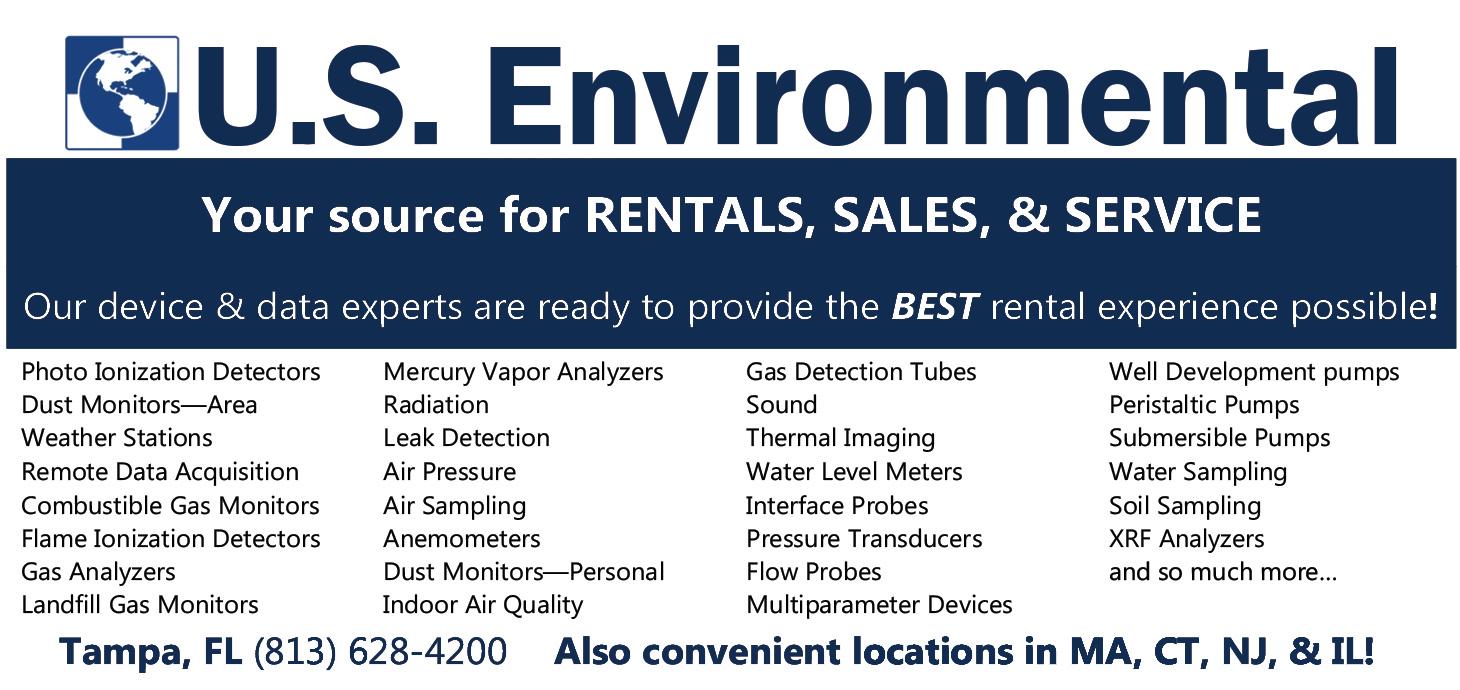

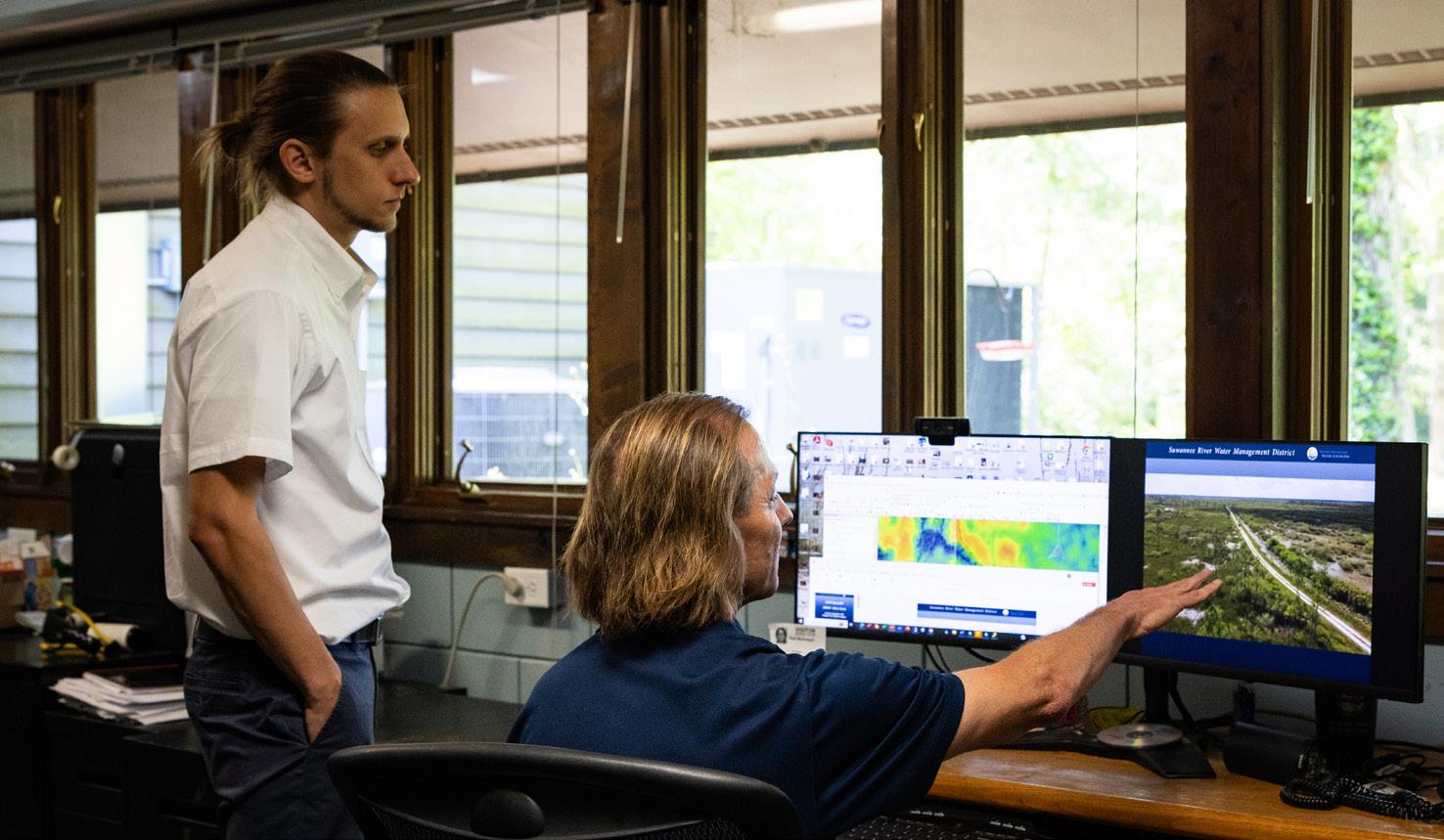
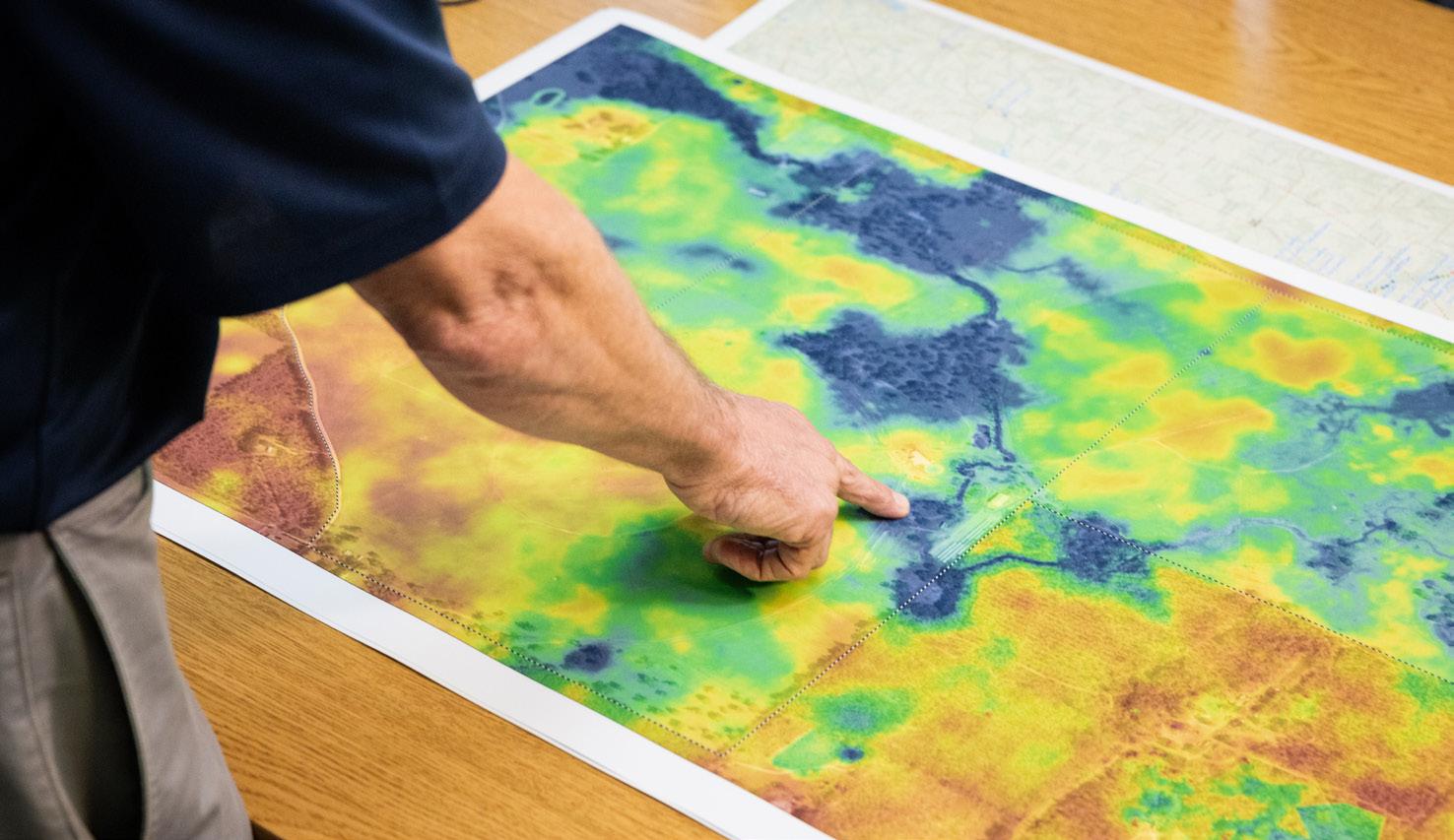
to SRWMD lands will benefit from more detailed maps and data on trails, water levels, and wildlife habitats, enhancing their outdoor experience.
Better emergency response and planning: With enhanced GIS capabilities, SRWMD will be able to respond more effectively to natural disasters, such as floods and wildfires, and develop more robust emergency plans.
During the 2024 session, 325 bills were enrolled and sent to Gov. Ron DeSantis.
Both Perez and Albritton praised a $2.8 billion tax cut on their respective floors on Day 60 of the legislative session. Perez lauded the budget deal as “historic.”
Each chamber stayed in recess for hours on the last day of session, effectively killing bills on one side or the other. They eventually left for the day as midnight was nearing.
The Florida House initially proposed a more than $5 billion tax relief package that focused on a permanent sales tax cut, while the Florida Senate’s proposal was a more modest roughly $2 billion tax relief package with a mix of permanent and temporary measures.
The scale of tax cuts – which would affect projected revenues for the budget – sat at the center of the budget negotiations between the two chambers and which delayed the end of the annual session. Legislators’ only constitutional duty is to pass the state budget each year.
SB 80/HB 209 State Land Management: PASSED
Requires public hearings for all updated conservation & nonconservation land management plans; requires Division of State Lands to make available to public electronic copies of land management plans for parcels of certain size & for parcels located in state parks; revises duties of Division of Recreation & Parks; specifies
Investing in a Sustainable Future
By investing in GIS, SRWMD is building a stronger foundation for responsible water management, supporting the needs of property owners, farmers, recreational users, and the environment. As the district continues to innovate and improve its GIS capabilities, the benefits will be felt across the region, contributing to a more sustainable future for generations to come.
requirements for management of parks & recreational areas held by state; requires division to comply with specified provisions when granting certain privileges, leases, concessions, & permits.
Authorizes division to acquire, install, or permit installation or operation of camping cabins that meet certain requirements in state parks; prohibits division from authorizing certain uses or construction activities within state parks; requires that individual management plans for parcels located within state parks be developed with input from advisory group; and requires that advisory group's required public hearings be noticed to public within specified timeframe.
HB 1143/SB 1300 Oil Drilling: PASSED
Permits for Drilling, Exploration, and Extraction of Oil and Gas Resources; Requires the Department of Environmental Protection to consider certain factors when determining whether the natural resources of certain bodies of water and shore areas are adequately protected from a potential accident or blowout; and provides requirements for a balancing test to make such a determination, etc.
HB 733/SB 736 Brownfields: PASSED
Revises & removes provisions relating to institutional controls for mapping purposes; monetary compensation; site rehabilitation agreements; tax credits; brownfield area designations; & participation in brownfield program; and prohibits DEP & local pollution control programs from denying specified status or refusing to issue specified order for certain brownfield sites.
By ERIC BEIGHTEL
President Trump assumed the office of the President on January 20 and within hours of his swearing in – and during his inaugural celebration – he got to work undoing much of the policy priorities advanced during his predecessor’s term and advancing his own policy priorities.
On inauguration day, the President signed 26 executive orders, 12 presidential memoranda, and four proclamations – and that pace hasn’t significantly slowed since the first 100 days. A helpful visual from the American Presidency Project shows just how many executive actions President Trump has taken in this term compared to other Presidents.
This unprecedented volume of executive actions covers a wide range of topics and reflect President Trump’s view of the Executive Branch as having nearly unlimited discretion on how to interpret and enforce federal law and regulation. Of the nearly 200 executive actions taken (as of late April) about a quarter of them focus on environmental reviews and permitting of infrastructure projects
Substantive Changes to the National Environmental Policy Act Implementation
One of the first executive orders he signed, Executive Order (EO) 14154 “Unleashing American Energy” rescinded a Carter-era EO that directed the Council on Environmental Quality (CEQ) to promulgate implementing regulations for the National Environmental Policy Act (NEPA).
In that same EO, President Trump directed CEQ to rescind the current NEPA regulations and replace them with non-binding guidance. The effect of this policy has created uncertainty in the industry and with the agencies. Without CEQ’s overarching implementing regulations, there is greater potential for conflicting interpretation and implementation of NEPA among agencies, creating conflict, confusion, and delay in processing project reviews. CEQ’s guidance to the agencies directs them to develop guidance that stays true to the statutory language in NEPA, paying particular attention to amendments made by the Fiscal Responsibility Act.
In addition to rescinding CEQ NEPA regulations, the President leveraged his authority to make emergency declarations
CATEGORY OF ORDER
*As of April 16, 2025
Source: The American Presidency Project
that unlock streamlined environmental review and permitting procedures. Thus far, the President has declared eight national emergencies, including an energy emergency, which directed the U.S. Army Corps of Engineers to use emergency permitting procedures to accelerate permitting of energy projects. From the energy emergency, the President has also directed
the use of accelerated environmental review and permitting procedures for timber production, critical minerals, and coal.
Recently, the Department of Interior announced the establishment of emergency procedures to accelerate deployment of
ON PAGE 11
By LINA ALFIERI STERN
In the bustling heart of Data Center Alley, a 30-square-mile stretch in Ashburn, Virginia outside Washington D.C., more than 200 data centers hum with purpose, carrying much of the Internet traffic that fuels global connectivity. But last summer, nearly 60 of these digital hubs unexpectedly cut ties with the grid and switched to on-site generators, sending alarm bells ringing across the power community.
Generators are a standard safety mechanism designed to shield delicate computer chips from damaging voltage fluctuations. However, according to a recent Reuters article, the actions inadvertently caused a surge in excess electricity supply on nearby grids. The grid operators, PJM and Dominion Energy, had to swiftly adjust, reducing output from power plants to avert potential cascading power failures across the region. The incident uncovered a new vulnerability in the U.S. electrical grid — unannounced mass disconnections by data centers and other situations like the one in Data Center Alley have been steadily rising.
As Florida grows its data center footprint, local utilities must account for the sheer amount of energy required to run these 24/7 operations. A mid-sized data center on average uses around 20-30 MWh per year, enough to power 1,800-2,700 U.S. households annually. Large or so-called hyperscale centers use as much as 100 to 250 MWh. In 2023, U.S. data centers consumed approximately 176 terawatt-hours (TWh) of electricity, accounting for about 4.4 percent of the nation's total electricity consumption.
According to datacenters.com, there are 9,585 data centers in the world, with the U.S. hosting the most of any country with 3,664. As Artificial Intelligence (AI) continues to evolve and expand, it is
dramatically transforming the data center industry, elevating their role as major energy consumers and reshaping geographical preferences. By 2035, data centers in the U.S. are poised to take up 8.6 percent of the country's electricity demand, a significant increase from their current 3.5 percent share. This shift is largely driven by AI's intense computing power needs, with forecasts indicating that data center power demand will more than double in the next decade.
The development of data centers presents a complex challenge, often spanning up to seven years due to the need to secure critical resources such as land, power, and permits. Dominated by tech giants such as Amazon Web Services (AWS), Google, Meta, and Microsoft, these companies hold 42 percent of U.S. data-center capacity, illustrating a concentrated power structure within the industry.
The location of data centers can significantly affect energy pricing due to various factors, including grid demand, infrastructure upgrades, peak load issues, and regulatory policies and incentives.
Florida, with its strategic geographical positioning, offers significant advantages for data centers, particularly in accessing markets in Latin America and the Caribbean. This proximity facilitates faster and more efficient data transmission, which is crucial for organizations servicing these regions.
The state is home to 120 data centers across 17 markets, making it the fourth largest hub in the U.S., after California, Texas, and New York. In 2017, the Florida Legislature enacted a sales tax exemption specifically for data centers. The exemption applies not only to electricity, but also to sales and use taxes on data center infrastructure, equipment, and personal property. To qualify, data centers must

meet specific criteria, including making a cumulative capital investment of at least $150 million and maintaining a critical IT load of at least 15 MW, with a minimum of 1 MW per individual owner or tenant.
Major data center markets in Florida include Miami, Orlando, and Jacksonville, each with unique advantages:
Miami is a major international data hub, ranking No. 9 in the U.S. Its data centers, like the NAP of the Americas and Equinix Miami IBX, provide extensive connectivity to Latin America, the U.S., and Europe, benefiting from numerous global submarine cable systems.
Positioned as the 50th largest in the U.S. data center market, Orlando offers a strategic central location with minimal latency (the time it takes for data to travel from one point to another) for serving northern and southern Florida. Its growing tech ecosystem, fueled by academic and tech institutions, drives demand for data services, with the bonus of reduced hurricane risks due to its inland position.
Jacksonville's connectivity offers strategic
advantages between the Deep South and the East Coast. The city is a top destination for tech workers and benefits from lower industrial electricity rates, making it an attractive option for cost-effective colocation services.
In terms of workforce, Florida ranks fourth nationally with nearly 485,000 tech jobs. Its tech employment growth far surpasses the national average, further enhancing its appeal for data center operations. In addition to its skilled workforce, Florida ranks 1st in the U.S. for submarine fiber landings, 3rd for fiber miles, and 3rd for high-tech employment growth.
As the data center industry continues to expand globally alongside AI advancements, Florida stands out as a strategic location for businesses due to its unique combination of geographical advantages, robust infrastructure, and business-friendly environment. With the anticipated surge in demand for data processing and storage, Florida's data centers are well-positioned to meet the evolving needs of modern enterprises.

FLORIDA SOCIETY OF ENVIRONMENTAL ANALYSTS (FSEA) SPRING CONFERENCE
When: May 21–23
Where: Clearwater Beach Marriott on Sand Key
The spring conference focuses on technical sessions and regulatory updates for environmental analysts, with opportunities for networking and continuing education credits.
https://www.fsea.net/event-6066045
CORRIDOR CONNECT 2025
When: June 3–5
Where: Orlando
The Corridor Connect Summit brings together leaders from the business and conservation community to look for solutions and identify ways to help balance Florida’s growth while protecting the Florida Wildlife Corridor.
https://corridorconnect.org/ page/summit-2025
2025 FLORIDA ASSOCIATION FOR WATER QUALITY CONTROL CONFERENCE
When: June 4-6
Where: Naples Grande Resort
Florida Association for Water Quality Control (FAWQC) is a non-profit association of professionals, founded in 1978, dedicated to managing, improving, and protecting the quality of Florida's waters. The 2025 conference theme is “The Business of Water.”
https://fawqc.com/annual-conference/
2025 NORTH AMERICAN HAZARDOUS MATERIALS MANAGEMENT ASSOCIATION SOUTHEAST CHAPTER CONFERENCE
When: June 9-12
Where: Embassy Suites Jacksonville Baymeadows
The North American Hazardous Material Management Association (NAHMMA) is a professional organization dedicated to pollution prevention and reduction of hazardous materials entering municipal waste streams from households and small businesses. Our annual NAHMMA Southeast Chapter Conference is a critical networking opportunity bringing together hazardous waste professionals, buyers, and industry leaders from municipal HHW collection programs and SQG programs from the Southeastern United States.
https://nahmma.org/meetinginfo. php?id=237&ts=1744228770
FLORIDA ASSOCIATION FOR WATER QUALITY CONTROL
When: June 12-14
Where: Naples Grande Beach Resort
The Association is dedicated to managing, improving, and protecting the quality of Florida's waters. The conference will focus on timely presentations on critical Florida
water issues and agendas, continuing education, and networking.
https://fawqc.com/annual-conference/ 39TH ANNUAL ENVIRONMENTAL PERMITTING SUMMER SCHOOL
When: July 15-18
Where: J.W. Marriott Marco Island Beach Resort
The 2025 EPSS will bring public and private professionals together for unparalleled leadership and professional development, networking, and best-in-class programming you won’t want to miss!
https://floridaenet.com/
FLORIDA LOCAL ENVIRONMENTAL RESOURCE AGENCIES 2025 ANNUAL CONFERENCE
When: Sept 17-18
Where: Alachua County The mission of FLERA is to enhance communication, education and advocacy for Florida local environmental protection efforts.
https://www.flera.org/2025-annual-conference
2025 RESILIENCY FLORIDA ANNUAL CONFERENCE
When: Sept. 17-19
Where: Sunseeker Resort, Charlotte Harbor
This year’s conference theme is Adapting Today; Powering Tomorrow!
The program will feature four concurrent tracks focusing on Beach Management, Energy, Gray and Green Infrastructure, and Smart Planning. Additionally, plenary sessions will bring attendees together
for discussions with invited speakers on resilience issues of statewide importance, including federal and state legislative policy and funding initiatives.
https://www.resiliencyflorida. org/2024-conference
THE 30TH FLORIDA REMEDIATION CONFERENCE
When: Nov. 3-5
Where: Rosen Centre Hotel Orlando
The Florida Remediation Conference (FRC) is one of the premier soil, air and water remediation conferences in the industry. FRC attracts over 400 attendees comprised of a mix of industry representatives, developers, consultants and contractors, and over 70 exhibitors and sponsors from across the country. It is far from just being a Florida event.
https://floridaremediationconference.org/
17TH ANNUAL SOUTHEAST FLORIDA CLIMATE LEADERSHIP SUMMIT
When: Dec. 16-17
Where: West Palm Beach
This Summit is a key opportunity for sharing innovative ideas, displaying successful climate initiatives, and fostering collaboration among leaders from various sectors. Attendees include government officials, scientists, nonprofit organizations, business leaders, academia, media, community leaders, and international organizations. It will highlight impactful projects for immediate implementation, encourage valuable networking and strategic planning, and leverage collective insights to tackle pressing South Florida climate issues.
https://conference.ifas.ufl.edu/climatesummit/


The Florida Department of Environmental Protection (DEP) recently awarded $25 million in Local Government Water Supply Pilot Grant Program funds for 13 projects designed to improve water supply infrastructure in Northwest Florida. The projects are intended to enhance water supply resilience in the region, reduce water loss, and ensure residents have dependable access to drinking water and essential resources for firefighting.
“DEP remains committed to securing Florida’s water future through proactive investments in infrastructure and natural resource protection,” said DEP Secretary Alexis A. Lambert.
These awards are expected to support the water needs of approximately 170,000 residents across Escambia, Santa Rosa, Okaloosa, and Walton counties. Northwest Florida’s long-term water supply strategy addresses the region’s unique water challenges, including the protection of the Coastal Floridan Aquifer where many of the largest public supply water users reside in fast-growing coastal communities.
Key projects include.
• $3 million for the replacement and upgrade of the City of Gulf Breeze’s Gulf Islands National Seashore water transmission main. The undersized, 50-yearold concrete main will be replaced with a larger main to increase reliability and to act as an emergency supply main for the Pensacola Beach water system operated by the Emerald Coast Utility Authority.
• $3.5 million for the City of Mary Esther to replace mains to address issues with water supply, water loss, water quality and insufficient flow capacity due to older, undersized piping.
• $773,419 for the City of Paxton to replace existing 2-inch water lines with 6-inch water lines to meet water supply and firefighting needs.

FWC thanks building owners for hosting rooftop-nesting shorebirds
Florida Fish and Wildlife Conservation Commission (FWC) is thanking building owners and managers hosting shorebird and seabird species nesting on their roofs this season. Shorebirds and seabirds typically nest directly on beaches, but according to FWC, species including black skimmers, least terns, roseate terns and American oystercatchers are increasingly using gravel rooftops to nest and raise chicks.
Rooftop nesting occurs between April and September but can begin as early as February for American oystercatchers in some regions. Building rooftops provide important alternative nesting habitat for shorebirds and seabirds, many of which are imperiled. Roughly 50 percent of Florida’s least tern population relies upon rooftops for nesting.
If you own or manage a building where shorebirds or seabirds are nesting on the roof, you can coordinate with a FWC Regional Shorebird Biologist to learn how to help promote nesting success. To find a regional shorebird biologist near you, go to MyFWC.com/Shorebirds and click on “Shorebird Nest Dates and Contacts.”
If you have shorebirds or seabirds nesting on your roof, FWC recommends waiting to conduct routine maintenance and
nonemergency repairs until after shorebird nesting season ends in September. If unexpected repairs are required during the nesting season, FWC’s regional shorebird biologists can work with building owners to determine if take could occur and how to apply if a permit is needed.

Time to start being BearWise® this year
The Florida Fish and Wildlife Conservation Commission (FWC) reminds the public to be BearWise® and watch for bears as they stop hitting the winter snooze button. Bears have left their winter dens for food and water and rarely pass up an easy meal.
Accessible garbage, bird seed, or pet food left around your property is like ringing a dinner bell. Secure your attractants to ensure bears will move on from your neighborhood and females won’t teach their cubs your yard is a convenient buffet.
Remember, a screened-in porch counts as “outside” to a hungry black bear.
• Never feed or approach bears.
• Remove bird feeders when bears are active.
• Feed your pets inside if possiblenever leave pet food outdoors.
• Clean and store your grills and smokers.
• Secure food, garbage, and recycling.
• Alert your neighbors to bear activity in the area.
Black bears are generally not aggressive. Mind your pets. Dogs can trigger defensive behaviors from bears, especially females with cubs. Keep dogs close on a

short leash and stay aware of surroundings. Before letting a dog outside in the yard, flip the exterior lights on and off and bang on the door to give bears and other wildlife a chance to leave the area.
Bears cross roadways as they become more active this time of year. Avoid vehicle collisions by slowing down when driving, particularly in rural areas at dawn or dusk. Look for road signs identifying bears and other wildlife crossing areas. Each year in Florida, an average of 250 bears are killed after being hit by vehicles.
If you are having a bear conflict, FWC should be your first call.
Go to MyFWC.com/Contact and click “Contact Regional Offices” to find the phone number for your region. Call the FWC’s Wildlife Alert Hotline at 888404-FWCC (3922) to report someone who is harming bears or intentionally feeding them.
Record Low Water Levels in the Mid-Hawthorn Aquifer in Northeastern Cape Coral
The South Florida Water Management District's Governing Board has authorized the District's Executive Director to issue a Water Shortage Order imposing Modified Phase IV Water Shortage restrictions to protect groundwater in the Mid-Hawthorn Aquifer.
The aquifer, located approximately 125 feet underground, provides water to many private wells in the area. Water levels within this aquifer are at record low levels.
The restrictions go into place when water levels in the Mid-Hawthorn Aquifer decline below the "future action level" of -93.01 feet for two consecutive weeks. As of April 9, 2025, the water level at the USGS Monitoring Well L-4820 in the water shortage area is at -91.68 feet.
Phase IV water restrictions mean residents will no longer be able to use their lawn irrigation systems in the designated area. Currently, landscape irrigation is limited to one day a week in the designated area for irrigation water supplied by private wells.
Residents can help alleviate water shortages by following their irrigation rules and taking steps to conserve water as much as possible.
Planned Wekiva Trail Extension gets good news
Lake County’s plans for the 11.5-mile rails-to-trails Wekiva Trail Extension are moving forward.
Railroad company CSX Transportation plans to collaborate with Lake County, the City of Tavares, the City of Mount Dora, and the Trust for Public Land on using abandoned train tracks to develop a multimodal travel corridor connecting downtown Tavares to downtown Mount Dora, benefiting local community members, tourists, and businesses.
“The Wekiva Trail Extension will ultimately make Lake County a safer place to travel and play,” said Lake County’s Engineering Director Jeff Earhart.
“This will be great for everyone who wants to get outside and exercise,” said Leslie Campione, Lake County Board of County Commissioners chairman. “The Wekiva Trail Extension will be an asset for Lake County’s residents and visitors, and there
are huge economic benefits for downtown districts and businesses near trails such as this.”
Negotiations with CSX are expected to be completed by the end of 2025.
The Wekiva Trail Extension is anticipated to cost about $53 million. Lake County and its partners hope to secure grants to cover more than 50 percent of the cost. Lake County has invested $36 million to create 38 miles of trails since 2000.
For 75 years, Hillsborough County Mosquito Management Services has been on the front lines of protecting residents from mosquito-borne diseases and reducing the number of mosquitoes.
The first organized mosquito control efforts in the Tampa area were conducted by the Davis Island Civic Association, which contracted for aerial spraying of the island. In 1947, the contract spray plane crashed, destroying the aircraft. The association then directed its approach toward the formation of an organized county mosquito control effort that led to the creation of Hillsborough County Mosquito Control by a Special Act of the State Legislature on June 13, 1949.
In September of the same year, the Hillsborough County Board of Commissioners levied .25 mill to fund the mosquito management services program. In 1994, the
certain energy projects identified in the President’s energy emergency declaration. The emergency procedures rely on existing regulatory procedures for consultations under Section 7 of the Endangered Species Act and Section 106 of the National Historic Preservation Act.
The alternative arrangements created under NEPA which establish a goal of completing environmental assessments within 14 days and environmental impact statements within 28 days. These alternative procedures do not require public review or comment on the environmental assessments and anticipate only 10 days of public comment on the environmental impact statement and no opportunity for review of a draft document before finalizing and issuing a record of decision.
The alternative arrangements for NEPA, Section 7 and Section 106 all require that project sponsors proactively agree to use the emergency procedures. Considering the existing regulatory framework for the Section 7 and Section 106 alternatives, expect an increase in project sponsors leveraging those authorities but the unprecedented and controversial nature of the NEPA alternative procedures are likely to give project sponsors pause.
The President campaigned on eliminating what he perceived as regulatory barriers to economic development and has made good on that promise through a series of executive actions that direct agencies to review existing regulations and provide recommendations for rescission or modification. Including:
Setting a goal of rescinding ten existing regulations for every new regulation promulgated
Board voted to place Mosquito Management under Public Works, which is where the unit lives today.
Mosquito Management continues to help protect residents by monitoring for mosquito-borne illnesses, and controlling mosquitoes through biological methods, trapping, elimination of breeding sites, destruction of larvae, and spraying products approved by the EPA on the street level and from the sky.
There are 30 mosquito traps throughout the County to keep track of the mosquito population, and the Sentinel Chicken Program monitors for the Encephalitis viruses in birds before they reach humans. Mosquito Management Services also works with the Florida Department of Health to monitor mosquito-borne diseases such as dengue fever, Zika, and chikungunya.

St Johns Riverkeeper is sponsoring a beginner-friendly two-hour paddle along the St Johns River. Nature lovers can experience the evening flight of “clouds of bats” as they begin their adventures at sunset.
Reviewing and modifying or rescinding regulations to ensure that agency implementation reflects the “best reading” of the statute
Establishing “sunset dates” in regulations that require agencies to evaluate whether regulations still serve their intended purpose
Cancelling regulations determined to conflict with recent Supreme Court decisions and thus considered “illegal”
As the President’s deregulatory initiative is implemented,changes are occurring:
The U.S. Army Corps and the Environ-
The event will take place at 7 p.m. between June 5 and 8.Participants will meet at the Palatka City Marina for a quick paddle lesson and fitting for kayaks.
The Riverkeeper describes the event as a light paddle along the riverfront out to an optimal spot to watch the sunset. After sunset, participants will have an opportunity to observe the cloud of colony bats as they leave their roost for their nightly adventures and learn about the benefits of bats from a local naturalist.
After the kayak trip, participants may extend their evening by exploring the city of Palatka.
Register here to reserve your spot through Earth Kinship. Choose any of the dates to paddle with fellow St. Johns Riverkeeper supporters and take advantage of the discounted bring-your-own-kayak rate.
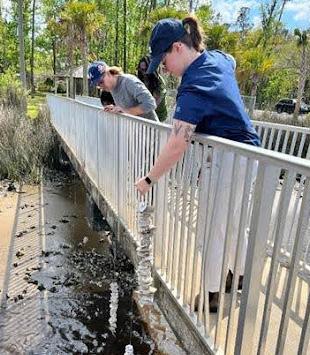
mental Protection Agency’s joint notice to update the definition of Waters of the U.S. under the Clean Water Act to reflect the recent Sackett decision from the Supreme Court
The U.S. Fish and Wildlife Service has proposed to rescind the definition of “harm” in Endangered Species Act regulations to remove consideration of habitat modification.
The Administration has shown an eagerness to test the bounds of long-standing environmental process and policy
St. Johns Riverkeeper is partnering with the Jacksonville University Marine Science Institute, Coastal Conservation Association Florida, and the Riverview Collective Community Organization to install Vertical Oyster Gardens(VOGs) along the St. Johns River and its tributaries in the Jacksonville area.
VOGs are recycled oyster shells strung together on a wire that hangs down from docks along the river. The VOGs create habitat for new oysters along with many other species of marine invertebrates.
The Riverkeeper characterizes the oyster as the ecosystem’s unsung hero. Oysters make waterways healthier and communities more resilient. A single oyster can filter up to 50 gallons of water per day, and a 1-acre oyster reef can filter 24 million gallons of water per day. They improve water quality and clarity by removing algae, organic matter, and excess nutrients. Oysters capture and store carbon dioxide from the atmosphere.
Oyster reefs are natural buffers against coastal erosion and storm surges. As oyster shells cluster, they reduce wave energy and help protect shorelines from the full force of storms. The reefs also create habitat for hundreds of aquatic species, including commercially and recreationally valuable fish species.
Oyster reefs are one of the planet’s most imperiled marine habitats, with more than 85 percent of natural reefs lost due to overharvesting, disease, and pollution.
and stakeholders should expect that to continue.
While the efforts to accelerate permitting have value, many are legally untested and project sponsors who seek to leverage certain strategies may invite unnecessary risk as these substantive policy shifts make their way through court challenges and the agencies modify their approach to implementation. Now, more than ever, expert advice and risk management are critical to project success.
Eric Beightel is Federal Strategy Director at Environmental Science Associates, an environmental consulting firm with 21 offices nationwide, including five in Florida
